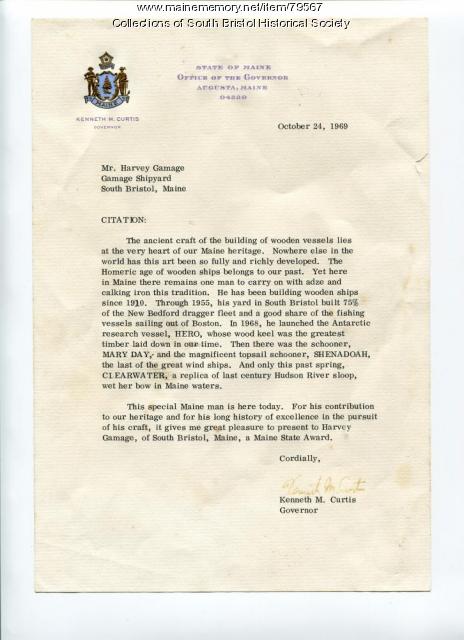Keywords: Hero
Item 12794
Sloop Hero weathervane, Colby College, Waterville, ca. 1900
Contributed by: Colby College Special Collections Date: circa 1900 Location: Waterville Media: Photographic print
Item 74185
'Sorority Girls,' Jefferson Theatre, Portland, 1912
Contributed by: Maine Historical Society Date: 1912 Location: Portland Media: Ink on paper
Exhibit
Fallen Heroes: Maine's Jewish Sailors and Soldiers
Thirty-four young Jewish men from Maine died in the service of their country in the two World Wars. This project, including a Maine Memory Network exhibit, is meant to say a little something about some of them. More than just names on a public memorial marker or grave stone, these men were getting started in adult life. They had newly acquired high school and college diplomas, they had friends, families and communities who loved and valued them, and felt the losses of their deaths.
Exhibit
Creation and other cultural tales are important to framing a culture's beliefs and values -- and passing those on. The Wabanaki -- Maliseet, Micmac, Passamaquoddy and Penobscot -- Indians of Maine and Nova Scotia tell stories of a cultural hero/creator, a giant who lived among them and who promised to return.
Site Page
Life on a Tidal River - Bangor Site Resources
"Yankee warrior: the story of a Civil War hero from Maine. Bangor: Bangor Publishing Company, 1993. Print. Heseltine, Charles D."
Site Page
John Martin: Expert Observer - Arvida Hayford, Bangor, ca. 1867
"… "The gentleman below has been noted as the hero of profligacy in Bangor for 25 years. I have given his person & expression almost exact…"
Story
Nemo's Nightmare of World War I
by Mike and Bryan Luciano
Franklyn J. "Nemo" Burbank of Livermore Falls was our ancestor who fought in World War I.
Story
How Mon-Oncle France came to Les-États
by Michael Parent
How Mon-Oncle France came to the United States.
Lesson Plan
Longfellow Studies: The Birth of An American Hero in "Paul Revere's Ride"
Grade Level: 9-12
Content Area: English Language Arts, Social Studies
The period of American history just prior to the Civil War required a mythology that would celebrate the strength of the individual, while fostering a sense of Nationalism. Longfellow saw Nationalism as a driving force, particularly important during this period and set out in his poem, "Paul Revere's Ride" to arm the people with the necessary ideology to face the oncoming hardships. "Paul Revere's Ride" was perfectly suited for such an age and is responsible for embedding in the American consciousness a sense of the cultural identity that was born during this defining period in American History.
It is Longfellow's interpretation and not the actual event that became what Dana Gioia terms "a timeless emblem of American courage and independence."
Gioia credits the poem's perseverance to the ease of the poem's presentation and subject matter. "Paul Revere's Ride" takes a complicated historical incident embedded in the politics of Revolutionary America and retells it with narrative clarity, emotional power, and masterful pacing,"(2).
Although there have been several movements to debunk "Paul Revere's Ride," due to its lack of historical accuracy, the poem has remained very much alive in our national consciousness. Warren Harding, president during the fashionable reign of debunk criticism, perhaps said it best when he remarked, "An iconoclastic American said there never was a ride by Paul Revere. Somebody made the ride, and stirred the minutemen in the colonies to fight the battle of Lexington, which was the beginning of independence in the new Republic of America. I love the story of Paul Revere, whether he rode or not" (Fischer 337). Thus, "despite every well-intentioned effort to correct it historically, Revere's story is for all practical purposes the one Longfellow created for him," (Calhoun 261). It was what Paul Revere's Ride came to symbolize that was important, not the actual details of the ride itself.













